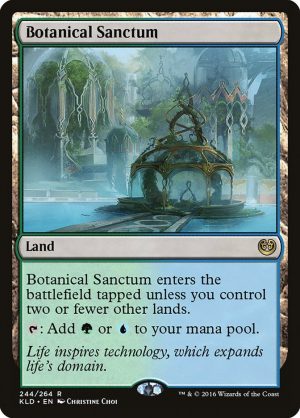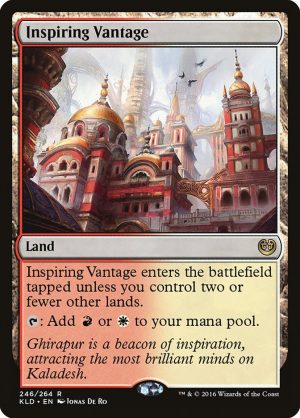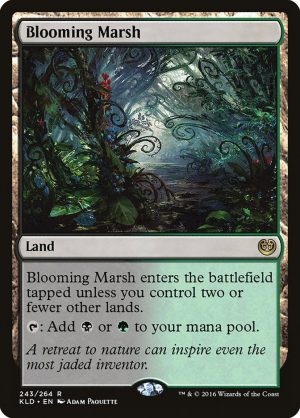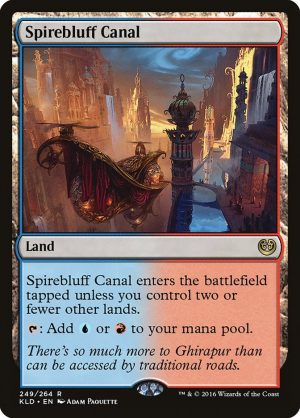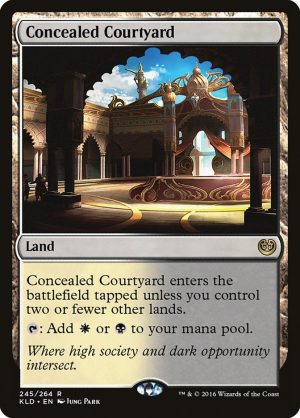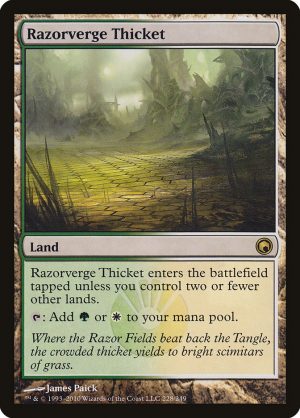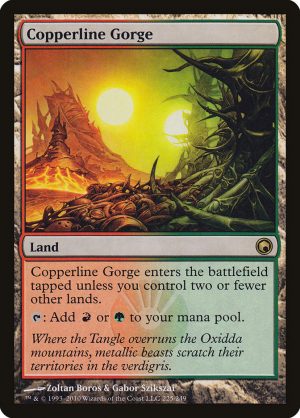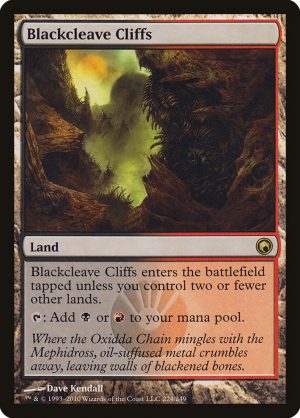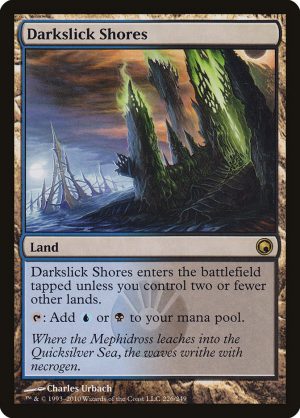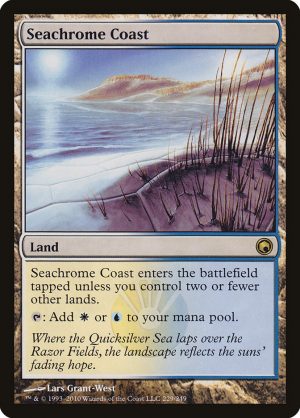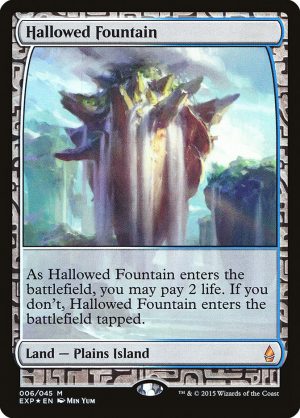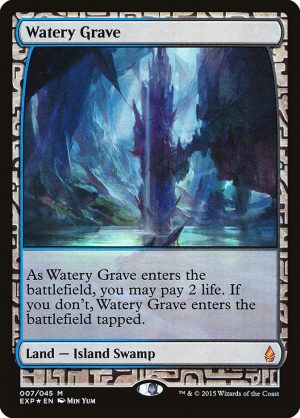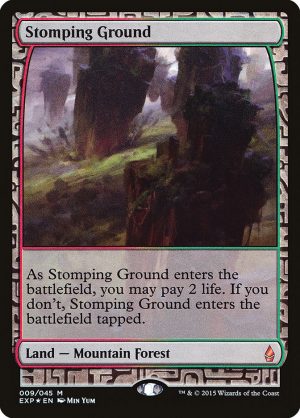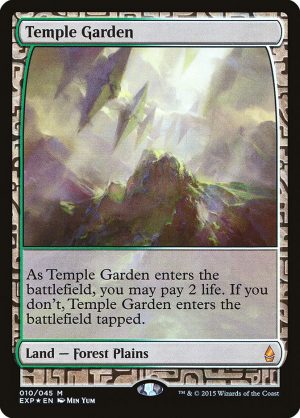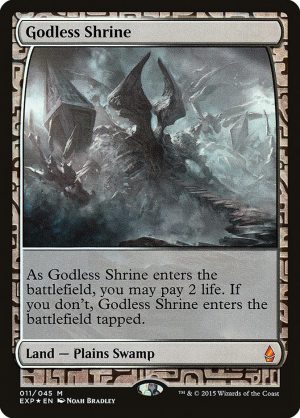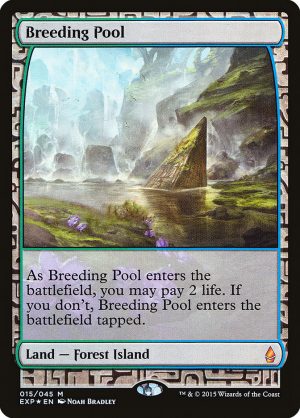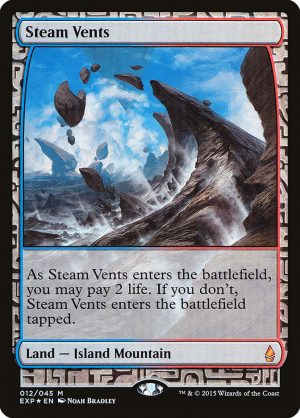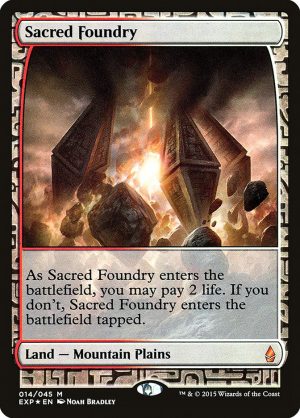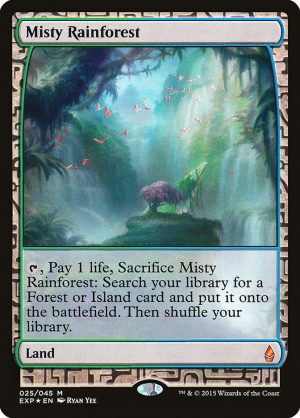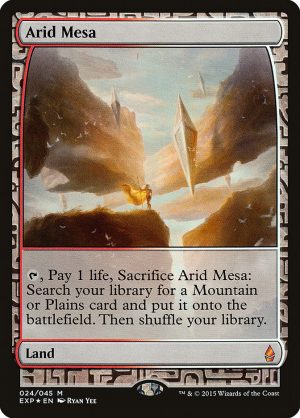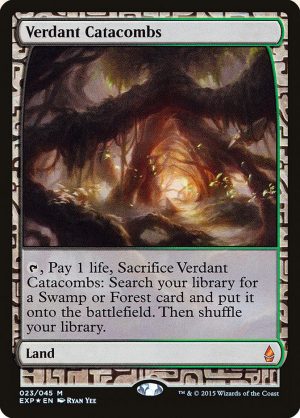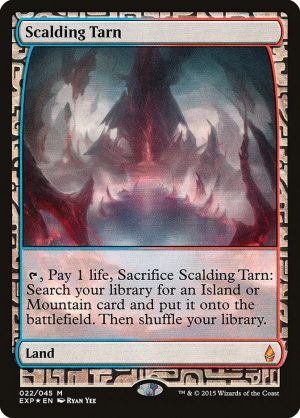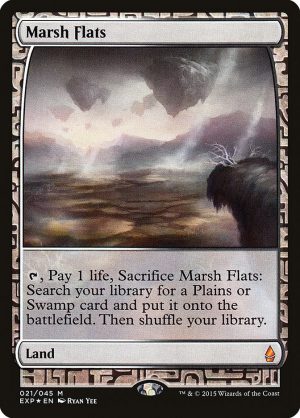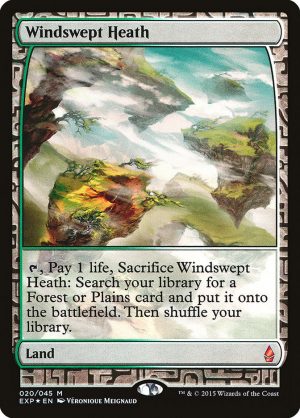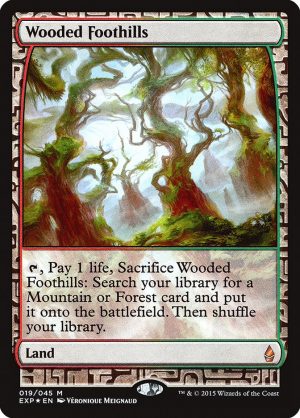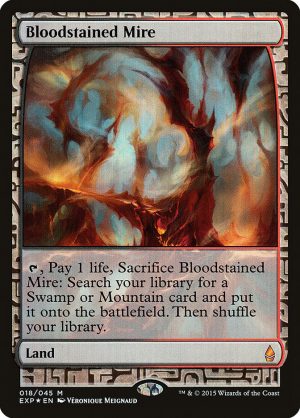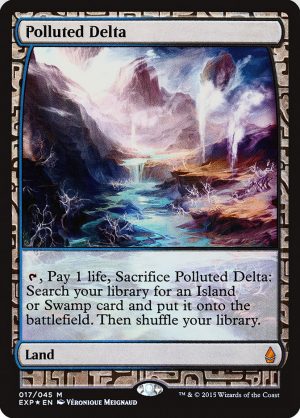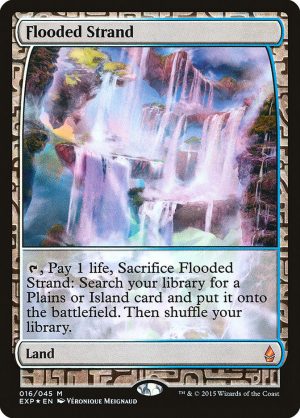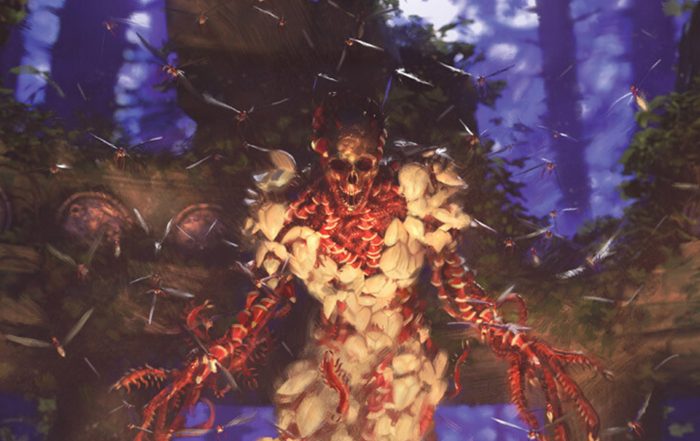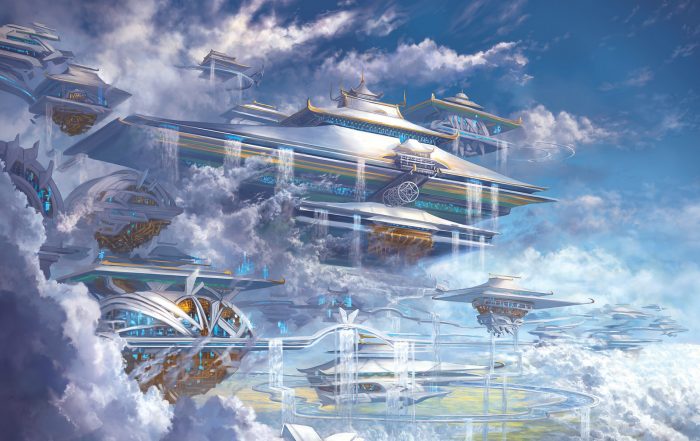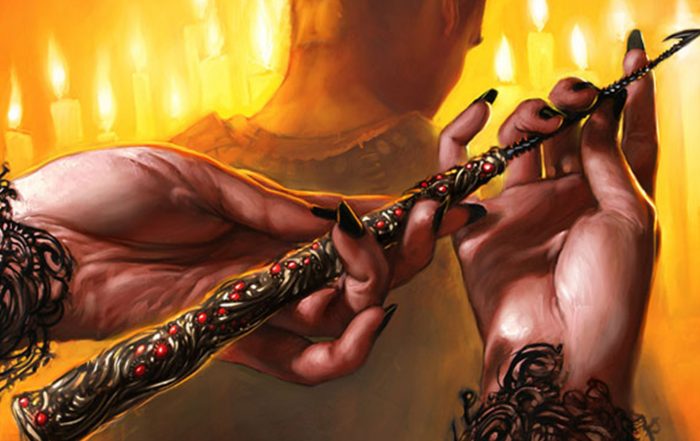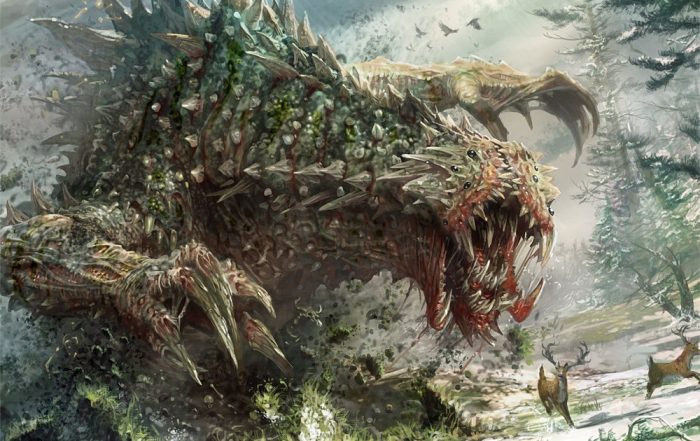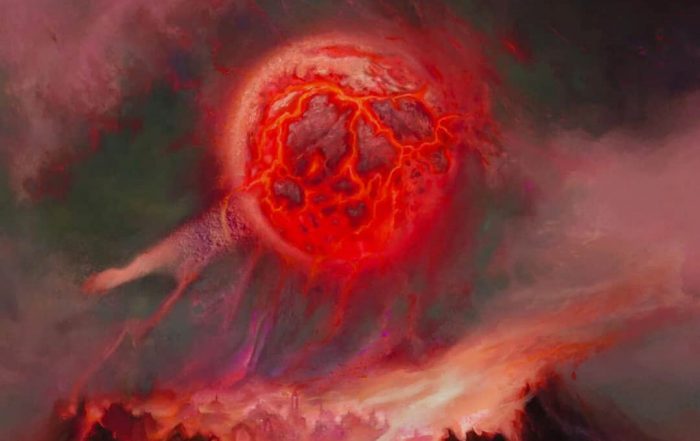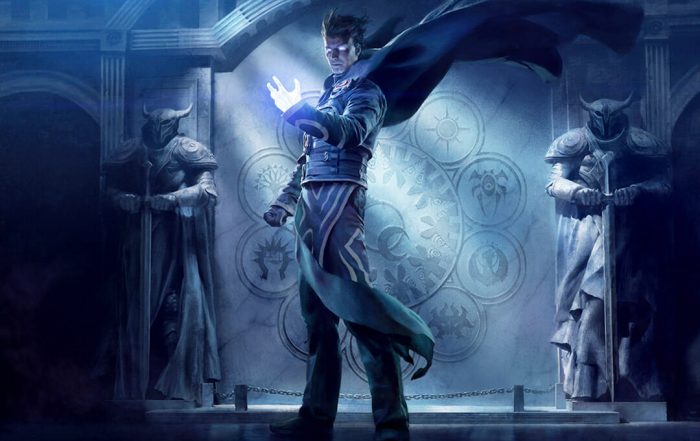Best Cards in Modern – Lands [2022]
The Top 5 Lands in Modern
Authors: Andrea Piemonti, Sebastian Rosenauer, Ricardo Silva, Sven Stolz, Zen Takahashi
Editor: Philippe Zens
Last year I was approached by Sebastian, one of our magazine writers, about the idea of making a collaborative series – where a couple of authors would rate and review the best cards in Modern.
A couple of months later and here we are. Looking at the base of each deck: Lands.
This is how it works
We asked our authors to send us their personal top 10 land cards of the Modern format. Then we created an aggregated list, based on their top 10, to come with a unified Top 5 list of cards. We sent them the top 5 and asked for their comment.
-
Do they think this is a good top 5?
-
Are these the worthiest cards?
-
Were there any snubs?
-
Is the number one spot deserved?
-
What impact do those cards have on the format?
These and many other questions will be answered in this article. One more note before we dive into the wilderness of Modern. We will go straight through the top 5 and then also share the initial top 10 lists of our authors.
We really hope you enjoy this, have fun reading, and don’t be shy and discuss this in the comments. We would love to hear from you.
Fifth Place – Boseiju, Who Endures
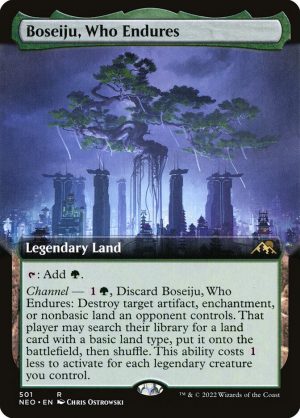
Andrea Piemonti
I personally dislike the design behind Channel Lands: Having a basic land with upside makes it too good to not be included in all the decks that can do so.
In fact, I played many green decks lately and each of those was packing 2-3 copies of Boseiju, Who Endures in the 75.
Boseiju, Who Endures is probably the strongest one of the Channel Lands though: It’s the cheapest and deals with a ton of problems (artifact hate vs. Cascade decks/annoying enchantments/Man Lands) while being uncounterable.
Even if it’s not that broken with Wrenn and Six as people thought at first, I feel it’s one of the best legendary lands we got, not only in Modern, and it’s here to stay.

Sebastian Rosenauer
The first card on our list of the best lands in Modern is a very recent addition from Kamigawa: Neon Dynasty: Boseiju, Who Endures.
Starting with the first spoilers, this legendary land has been anticipated with fear and excitement. Being able to deal with many problematic permanents at the cost of only two mana and a land slot had many saying that this would be too strong for the format.
A few months after release we can safely say that it did not kill Modern but that it left a lasting impression.
Playing random artifacts and enchantments like Blood Moon or Ensnaring Bride is now even less appealing than before and decks like Hammertime or Affinity lost a few points on the tier-list. From the five legendary lands introduced in Kamigawa’s newest installment, Boseiju, Who Endures is by far the strongest, given that its channel ability costs only two mana to activate compared with, for example, the four of Otawara, Soaring City. It could reasonably have costed three mana, and it would still be the best land of the cycle. Therefore, I think it deserves to be on our Top 5 list, and I think the number 5 spot is adequate.

Ricardo Silva
This recently printed land immediately caught everyone’s eye in spoiler season and had a hefty price tag from the start to go along with the hype. Since then, Boseiju, Who Endures has lived up to its hype and basically every green deck in the format plays at least one copy of it.
For certain decks like Amulet Titan and Scapeshift it serves as an uncounterable answer to Blood Moon, other decks use it as a utility land which works great in tandem with Wrenn and Six.
There is virtually no drawback in playing one copy instead of another basic Forest, which makes Boseiju and the other lands of the same cycle staples in basically every format they are legal in.

Sven Stolz
Boseiju, Who Endures was one of the strongest land printings in recent history of the format and has empowered several archetypes.
Decks are now able to play a preboard hate interaction for nonbasic lands, artifacts and enchantments inside a color producing land, which gives the card huge flexibility and almost an absolute pillar status.
In combination with Wrenn and Six, you even look at a recursive removal spell almost for 0 deck building costs. While that being an extraordinary synergy on its own, the ability Channel can only be countered or interacted with very specific cards like Trickbind, Pithing Needle or Blacksmith’s Skill, so your choices are rather limited. Boseiju, Who Endures has helped several decks to get rid of anything they had problems with, may it be Blood Moon against Amulet Titan or Damping Sphere against Tron.
We’ll definitely see this card to continue being good and at least a 1 of in almost any deck which can play it.

Fourth Place – Fast Lands
Andrea Piemonti
Modern is mostly a turn 4 format in my eyes.
This mean you’re not always deterministically dead on turn 4 (unless you’re playing vs. Living End) but turn 3-4 are the most important turns to do something that impacts the game.
Fast Lands play a key role to this pattern, being untapped Dual Lands for the early turns without downside (it’s huge vs. Lava Spike decks) and then they enter tapped. The fact that they don’t have any basic land type is mostly not a problem since Mystic Sanctuary got banned.

Sebastian Rosenauer
The Fast Lands have been staples of Modern for many years and will continue to do so. They fit the format perfectly.
In Modern, the early game is very important, and you need to make sure not to stumble on mana during your first few turns. A tapped land is much more punishing on turn two than on turn four.
The Fast Lands come untapped up to turn three and therefore imitate the original Dual Lands quite well. When I started playing the format, I was startled at their comparatively low price, but since then they have gained quite some value, understandably so.
They are still very affordable given their quality, and so I would recommend them as the best budget option for most Modern mana bases. The best deck in the format, Izzet Murktide, usually plays four copies of the blue-red Fast Land Spirebluff Canal. The deck cannot afford a tapped land in the early turns, but it is not that dramatic on a later turn, especially with some Treasure tokens lying around.

Ricardo Silva
In a format as fast-paced as Modern, Fast Lands fit in especially well in aggressive decks – Hammer Time and Burn can for example cast every spell in their deck with three mana, so a tapped land in the late stages is often tolerable. They are also oftentimes seen in other Urza’s Saga or Cascade decks as well, as Urza’s Saga is sacrificed on the third chapter allowing a Fast Land to enter the battlefield untapped even as a fourth land drop, and three mana is enough to cast Violent Outburst, Shardless Agent and the like.
I personally did not include them in my top 5 picks, since I believe that there are better and more impactful lands in the format, but especially players who prefer to play aggressive strategies cherish them and will probably disagree with me.

Sven Stolz
Fast Lands are a big part of Modern. With the format being in generally fast, lands are not really allowed to come in tapped, especially not when facing constant pressure of early threats like Ragavan or DRC.
Fast Lands are a great way to build your mana base when you’re in two color only and let you play more aggressively early turns.

Third Place – Urza’s Saga
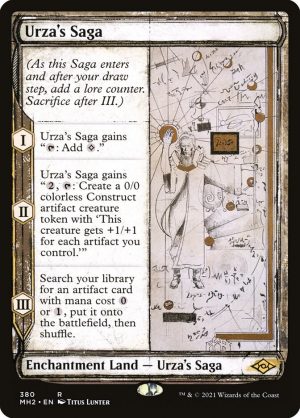
Andrea Piemonti
Best land printed in Modern for me, and it still makes no sense when you lose a game where your opponent just plays 2-3 Urza’s Saga casting maybe 1-2 spells.
I’m happy this card is in the format, but it’s my go-to when people ask me which card should be banned.
Now that I finished my rant after losing to hammer for the 100th time, let’s analyze it:
- Chapter one is pretty straightforward: Make one mana. Remember it’s a trigger, so your opponent can answer with it on the stack casting a Disenchant effect, and you can’t net the mana.
- Second chapter makes a token that gets +1+1 for each artifact you control. Its power and toughness are zero, so it still dies to Dress Down. But if you have just one artifact, and you have a Sword of the Meek in your graveyard, make sure to trigger it!
- Third chapter tutors an artifact with cost 0 or 1 (so no Chalice of the Void/Darksteel Citadel) and puts it on the battlefield. You can still activate the second ability while Urza’s Saga remains on the battlefield.
I saw a lot of cute interactions with Urza’s Saga + Thespian’s Stage, Hex Parasite or Power Conduit, but the fastest way to win is still probably get an Amulet of Vigor or Colossus Hammer and close out the game.
This card created an archetype itself, Jund Saga, with Tarmogoyf and Wrenn and Six to have Saga recursion.

Sebastian Rosenauer
This is one of the weirdest lands ever printed, no doubt. It is also one of the most powerful lands ever printed.
Since its release in Modern Horizons 2, the Saga has made its way into many existing decks while also creating new ones, such as Asmo Food. Urza’s Saga is a land, an enchantment, a token-maker and an artifact-tutor all at once, creating a package that is difficult to ignore and hard to play against.
I remember hearing a story about the card’s design process. Sam Black, who was part of the team creating the card, said that they had not enough opportunity to test the card in real life due to Covid-19 restrictions and thus there was not enough time spent on making sure the card is balanced.
Once you see the card in action, this story seems very plausible. There are a number of things R&D could have done differently to weaken the card a little bit, for example it not being able to make a token on the third chapter.
Interestingly, however, the card did not completely warp the format, and it is not played in any of the three best decks in the format! This shows that the card is not as problematic as many make it out to be and only time will tell if anyone finds an innovative way of using the Saga in a way that might bring it closer to a ban. For now, however, the land seems fine for Modern.

Ricardo Silva
The only land not producing any colored mana in our top 5 comes in at place 3, and I personally placed it even higher at second place.
There are multiple strategies in Modern revolving around Urza’s Saga, where the land serves as both a win condition making huge construct tokens and a tutor to find the plethora of powerful 0 or 1 mana artifacts in the metagame.
Amulet of Vigor, Shadowspear, Colossus Hammer, Relic of Progenitus, just to name a few, are all very impactful artifacts which can turn the tide of a game.
Against midrange and control decks, Urza’s Saga makes multiple must-handle creatures and can represent a three-for-one which is unprecedented for a land. Some decks even try to abuse Urza’s Saga as much as possible by potentially making tokens every turn of the game with Wrenn and Six or Power Conduit.

Sven Stolz
Named after one of the strongest editions that ever existed in history of MtG, Urza’s Saga is the strongest land printed in the last couple of years. The card is an absolute value machine and combines everything you can think of:
- It produces mana, so it helps to develop your board further.
- It creates creature tokens, so you get free attackers and threats on board which hopefully trade at least 2 for 1 with your opponent.
- Its last phase is a tutor for mana value 0 or 1 artifacts, bringing it directly in play, so your opponent can barely interact with it in the first place.
Urza’s Saga helped a lot of archetypes becoming much stronger than they were before, adding a lot of consistency and an alternative win condition to their shells. To those belong Amulet Titan, Hammer Time, Affinity, Underworld Breach, Jund, Eldrazi Tron and others.
The card is extraordinary good and would have been even better if we didn’t see the banning of Mox Opal and Lurrus of the Dream-Den. It will definitely be interesting to see what new cards come out for Urza’s Saga to shine.
So far I believe it remains a centerpiece of Modern with a future potential to be even better and more played than it is now.

Second Place – Shock Lands
Andrea Piemonti
Modern Dual Lands: They have always been a pillar of Modern’s mana bases, making it unique from other formats.
Nowadays with Fetches and Triomes you can build an almost perfect 5C mana base, but I remember struggling while trying to break Bring to Light.
At the moment, Shock Lands got a small additional value due to Boseiju, Who Endures being legal, since the card can tutor a Shock Lands too.

Sebastian Rosenauer
The second-best lands of the format, Shock Lands, are worlds apart from the previous dual-variant on this list, the Fast Lands.
Shock Lands always enter the battlefield untapped at the cost of two life. Given that most decks play these lands, the drawback of losing some life points is not that worrisome, as the opponents usually pay it too.
Being able to cast your spells is a central aspect of a successful game of Magic: The Gathering. There is no worse feeling than dying with cards on your hand only because you are missing a color. Shock Lands are not only great because they come into play untapped whenever you need them, they also have two basic land types, which is important for several reasons.
The drawback of losing two life is not even a bad thing necessarily, as decks like Grixis Death’s Shadow really likes to inflict these two points of life on themselves in order to boost their threat. All in all, Shock Lands are the closest one can get to the original Dual Lands, which are undoubtedly the best lands ever printed in MTG history. Consequently, they deservedly occupy the number two spot on our list.

Ricardo Silva
There is not much to be said about Shock Lands – having the right mana to cast your spells is crucial in Magic (there is nothing more frustrating than being mana screwed), and having the choice to either play them tapped if the mana is not needed, or untapped to cast spells, has made them long-time format staples.

Sven Stolz
Shock Lands are the original Dual Lands in the Modern format and one of the key lands for almost all decks mana bases. The format is hard to imagine without them, and therefore worthy of the second place in our top 5 lands list.

First Place – Fetch Lands
Andrea Piemonti
The best lands in the format, as I mentioned before also because Modern mana bases are improving with new lands. Snow Dual Lands helped you back in Snow times, and nowadays with Triomes you can easily cast a T2 Scion of Draco or Leyline Binding.
Being a land that goes to the graveyard makes a ton of value.
First it’s a shuffle effect, so even if we don’t have Brainstorm we still have Mishra’s Bauble and Jace, the Mind Sculptor, as well as other not so great cards, but they are also a +1 card in the bin and a +1 type helps you both with Delirium and casting Delve spells, other than trying to not die to Blood Moon.

Sebastian Rosenauer
The only lands that are even better than Shock Lands are the so-called Fetch Lands.
For the cost of one life, Fetch Lands allow you to search your library for a land with at least one of two basic land types and put it into play. In combination with the previous Shock Lands, this allows decks to have incredibly consistent mana bases, as a blue Fetch Land can search up any Shock Land that has the basic land type Island. But they can also search up basic lands, which can be very important. There are many other reasons besides mana consistency why Fetch Lands are so good.
One of these is flexibility. As you are allowed to crack your Fetch Lands at instant speed, sometimes you can wait until the last possible moment to decide which land to fetch up, giving you a little more spontaneity and room to respond.
Also, deck-thinning is sometimes quoted as a great advantage of the Fetch Lands. As you sacrifice your Fetch Land and search your library for a land, this takes one land out of your deck and increases the chance of you drawing a non-land card. Statistically, however, I think the effect of deck-thinning is very minimal and almost never worth the loss of even one point of life.
The primary reason why they are the best lands of the format remains mana consistency and the ability to get all your colors. They are the sole reason a deck like 4 color Omnath is even possible, and the reason Wrenn and Six is so powerful in this format.

Ricardo Silva
Fetch Lands play such a big role in Modern and other Eternal formats, and have so many subtle interactions and benefits, that I could fill multiple pages writing and going in depth about.
These are only some of the purposes that come to mind when thinking about Fetch Lands:
- Giving a player the choice to find exactly the needed colors to cast one’s spells
- Shuffling the deck at the right moment
- Filling the graveyard for delve spells and the like
- Finding your basic lands to play around Blood Moon and Back to Basics effects
- Not sacrificing them to play around Wasteland-effects or Fire // Ice
- Recurring them with Wrenn and Six

Sven Stolz
Fetch Lands are the centerpiece of almost all mana bases in Eternal formats, and seen in very high numbers in most of the decks.
Fetch Lands help you get all your colored dual and Shock Lands, thinning out your library, engaging shuffles for manipulating your library with cantrips and fuel your graveyard for various mechanics and cards like Delve threats, Wrenn and Six or others. Fetch Lands are what make the older forms of mana bases in Eternal formats so good and unique, and belong to the absolute fundamental elements of those formats.
The impact of banning Fetch Lands are tremendous and would ultimately lead into a completely different format. For that reason alone, Fetch Lands might be the most influential cards you find in Eternal formats period, maybe even more fundamental than Black Lotus in Vintage.

Personal Top 10 Lands of Each Author
Andrea Piemonti

- Fetch Lands
- Shock Lands
- Urza’s Saga
- Fast lands
- Cavern of Souls
- Triomes
- Boseiju, Who Endures
- Otawara, Soaring City
- Inkmoth Nexus
- Bounce Lands
Sebastian Rosenauer

- Fetch Lands
- Shock Lands
- Urza’s Saga
- Fast Lands
- Boseiju, Who Endures
- Triomes
- Cavern of Souls
- Canopy Lands
- Check Lands
- Valakut, the Molten Pinnacle
Ricardo Silva

- Fetch Lands
- Urza’s Saga
- Boseiju, Who Endures
- Tron Lands
- Cavern of Souls
- Valakut, the Molten Pinnacle
- Triomes
- Inkmoth Nexus
- Bounce Lands
- Otawara, Soaring City
Sven Stolz

- Fetch Lands
- Shock Lands
- Urza’s Saga
- Boseiju, Who Endures
- Triomes
- Fast Lands
- Canopy Lands
- Cavern of Souls
- Valakut, the Molten Pinnacle
- Den of the Bugbear
Zen Takahashi

- Fetch Lands
- Shock Lands
- Urza’s Saga
- Cavern of Souls
- Boseiju, Who Endures
- Canopy Lands
- Inkmoth Nexus
- Valakut, the Molten Pinnacle
- Otawara, Soaring City
- Fast Lands
All Articles from the Series
Best Cards in Modern – Multicolor [2022]
We asked our seasoned team of authors a tough question: What do they think are the best ten multicolored cards in Magic the Gathering's Modern format. We then went a step further and created a Top 5. Learn what they think about the very best cards of one of the game's most popular formats.
Best Cards in Modern – Lands [2022]
We asked our seasoned team of authors a tough question: What do they think are the best ten lands in Magic the Gathering's Modern format. We then went a step further and created a Top 5. Learn what they think about the very best cards of one of the game's most popular formats.
Best Cards in Modern – Artifacts [2022]
We asked our seasoned team of authors a tough question: What do they think are the best ten artifacts in Magic the Gathering's Modern format. We then went a step further and created a Top 5. Learn what they think about the very best cards of one of the game's most popular formats.
Best Cards in Modern – White [2022]
We asked our seasoned team of authors a tough question: What do they think are the best ten white cards in Magic the Gathering's Modern format. We then went a step further and created a Top 5. Learn what they think about the very best cards of one of the game's most popular formats.
Best Cards in Modern – Green [2022]
We asked our seasoned team of authors a tough question: What do they think are the best ten green cards in Magic the Gathering's Modern format. We then went a step further and created a Top 5. Learn what they think about the very best cards of one of the game's most popular formats.
Best Cards in Modern – Red [2022]
We asked our seasoned team of authors a tough question: What do they think are the best ten red cards in Magic the Gathering's Modern format. We then went a step further and created a Top 5. Learn what they think about the very best cards of one of the game's most popular formats.
Best Cards in Modern – Black [2022]
We asked our seasoned team of authors a tough question: What do they think are the best ten black cards in Magic the Gathering's Modern format. We then went a step further and created a top 5. Learn what they think about the very best cards of one of the game's most popular formats.
Best Cards in Modern – Blue [2022]
We asked our seasoned team of authors a tough question: What do they think are the best ten blue cards in Magic the Gathering's Modern format. We then went a step further and created a top 5. Learn what they think about the very best cards of one of the game's most popular formats.
